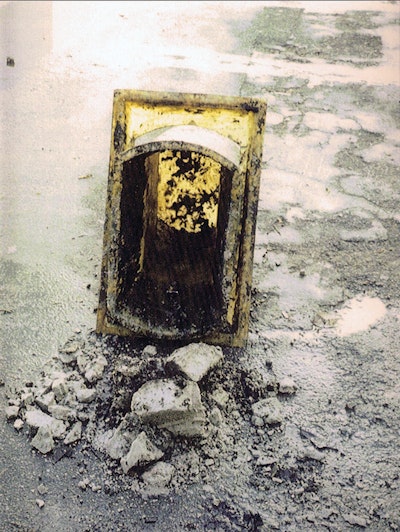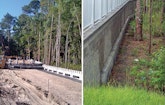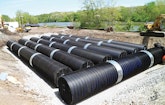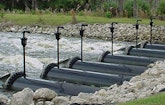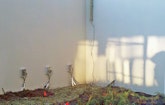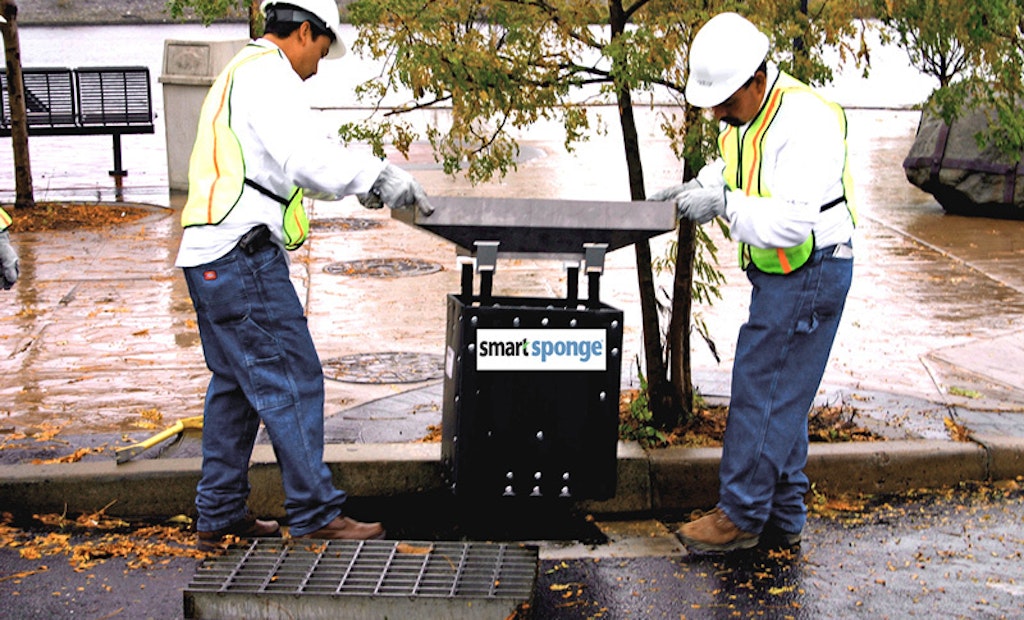Interested in Flow Control?
Get Flow Control articles, news and videos right in your inbox! Sign up now.
Flow Control + Get AlertsFilter system prevents stormwater hydrocarbons from entering water system
Problem: The City of Norwalk (Conn.) Stormwater Management Improvement Project (CNSM IP) began in 2005 as a commitment to clean up local waterways as a part of the Long Island Soundkeepers’ mission of protecting the Sound’s ecosystem. The city wished to prevent debris, sediment, bacteria, hydrocarbons, oil and grease from entering the Long Island Sound.
Solution: This $500,000 project involved installing AbTech Industries’ Ultra-Urban Filter units. These units included Smart Sponge Plus, which is approved for the removal of coliform bacteria and is registered with the EPA.
Result: The units had an initial average trash, debris and sediment removal rate of 75 percent, and maximum removal rates in excess of 99 percent. The first cleaning of the 275 catch basins yielded over 15,000 pounds of trash, debris and sediment. Two years after the initial installation, the filters have removed over 51,500 pounds of contaminants. Deconstruction of the filters found that approximately 49 pounds of contaminants were captured by each filter. In total, the 275 filters likely prevented in excess of 1,200 gallons of hydrocarbons from entering Long Island Sound, protecting the ecosystem and recreational use. 800/545-8999; www.abtechindustries.com.
Polyethylene pipe provides underground CSO storage
Problem: The City of Monticello, Ind., planned to replace a lift station at the Bryan Wastewater Treatment Plant and add an underground storage system for combined sewer overflow (CSO). The existing plant received large amounts of stormwater during wet weather events from the discharge of the city’s other combined sewers that lead to the Bryan lift station. In addition to the unnecessary treatment of millions of gallons of water, rain events surcharged the sanitary sewers leading to the plant, and caused raw sewage backups throughout the city.
Solution: DuroMaxx steel-reinforced polyethylene (SRPE) pipe from Contech Engineered Solutions was selected for 395,000 gallons of underground CSO storage. It was chosen because of its 80-ksi steel-reinforcing ribs, pressure-rated PE resin, use of electrofusion joints for watertight protection and the ability to nest the 96-, 84- and 72-inch-diameter pipes to reduce freight costs.
Result: The pipe provides necessary storage capacity with long-term service and performance. Its durability and long service life allow for easy future expansion as the municipality continues to grow. 800/338-1122; www.conteches.com.
Removable catch basin filter helps the management of illegal disposal in storm drains
Problem: After a large rainfall in Miami, Fla., in 1994, city workers found a flooded street and the catch basin plugged with concrete. The city’s public works department regularly faced the costly problem of catch basin concrete dumping down municipal storm drains. People often see it happening but don’t realize it’s a crime; it often goes unreported. The catch basin is then plugged with concrete and costs thousands of dollars to correct. The city taxpayers were eating the cost.
Solution: A Hydro-Cartridge from Advanced Aquatic Products International was installed in a catch basin that was randomly selected by a driver to dump the slurry of remaining concrete in his truck. This catch basin filter not only meets NPDES pollution reduction goals, but is easily removable for cleaning.
Result: City workers were able to lift out the entire filter and remove the concrete. The catch basin and filter were not damaged. After sampling and testing local concrete batch plants, the perpetrators were charged and fined. 800/738-7646; www.hydro-cartridge.com.
SCADA system helps keep remote surface water pumps operational
Problem: The Northern Palm Beach County Improvement District (NPCID) manages surface water through an approximate 128-square-mile multi-jurisdictional area that includes extensive wetlands that meander through many high-end communities including the PGA National resort and headquarters. The area has a mean elevation of 15 feet above sea level and high wet season rainfall levels (average 61 inches per year). NPBCID keeps all in check with a series of 15 remote pump stations (some having up to six pumps, with each pump moving water at a rate of 35,000 gpm) and 56 level control sites (many with multiple flood control gates). During the wet season (May thru October), many of these sites are difficult to reach and require a substantial amount of manpower to either remain on site or to risk injury and/or equipment failure trying to traverse the rain-saturated routes.
Solution: The municipality installed Data Flow Systems’ Tac II SCADA system to remotely monitor and control the pump stations and flood gates from a central site.
Result: The municipality enhanced its ability to efficiently manage manpower and equipment, and the ability to consistently monitor and control the flow of surface and stormwater through the entire district. 321/259-5009; www.dataflowsys.com.
Terraced vegetated slope solves drastic road grade change issues
Problem: A road-widening project in Sanford, Fla., was converting a two-lane county road into four lanes. The challenge was to look for a way to overcome an 8-foot change in grade from one side of the road to the other. County engineers were interested in an economical solution that would provide the most aesthetic solution possible, accounting for stormwater absorption and runoff.
Solution: The design, by Soil Reinforcement Design, Inc., called for Miramesh GR and Miragrid 3XT with a wire basket facing from TenCate Geosynthetics North America. Miramesh GR is a fairly open high-tenacity monofilament polypropylene product and Miragrid 3XT is a polyester geogrid that provides reinforcement for walls and slopes and has low creep values. A terraced vegetated wall was chosen in lieu of sheet piling or modular block wall. The total length of the wall was approximately 400 feet and tapered from 8 feet.
Result: The system worked out both from an economical and aesthetic perspective. Stormwater runoff has not been an issue. 800/685-9990; www.mirafi.com.
Basin system utilizes gravity to drain stormwater runoff
Problem: Acacia Middle School in Hemet, Calif., recently underwent extensive improvements, including a redesign of the school’s stormwater management system. The original system was designed to hold most of the runoff in the system, but it was determined that after a storm, runoff might pump back onto the street. Engineers were tasked with developing a system where the runoff would not exceed its peak flow to the street.
Solution: Engineers at Tory R. Walker Engineering, Inc. consulted with CULTEC Inc. to determine the most efficient way to install a subsurface stormwater management system that would include hydraulic principles and eliminate a pumping system. A three-basin system was designed to drain as much water volume by gravity as possible. Water that cannot be drained by gravity is directed to the parking lot next to the street. The first two basins are hydraulically connected, and a third longer basin was added in lieu of a drainage pipe.
Result: The system eliminated the need for a pumping system and any associated maintenance. The hydraulic system maximized the use of the limited space while providing the school with significant cost savings. 800/428-5832; www.cultec.com.
Store built near Florida woodlands utilizes stormwater modules for runoff
Problem: Construction of a national drug store chain location in New Port Richey, Fla., required that the site be raised and fill be placed in a natural flood-mitigating woodland, reducing the attenuation capacity. The project contractor needed a product with acceptable levels of structural strength and stability.
Solution: The contractor looking for an alternative product contacted Brentwood Industries distributor, RH Moore and Associates, for pricing. RH Moore recommended the StormTank because of its high strength and high void space as an improvement to the system.
Result: StormTank modules were in-stalled abutting the retaining wall to provide capacity as floodwaters rise. This solution provided the developer, engineer and contractor a cost effective solution. 610/374-5109; www.brentwoodindustries.com.
Web-based weather stations track performance of green roof
Problem: Amherst College in western Massachusetts needed to determine the most prolific vegetation varieties for the green roof planned for its new 250,000-square-foot science building, expected to open in 2018. The green roof is intended to mitigate stormwater runoff, offset interior cooling costs and help the facility blend in with its natural surroundings.
Solution: Four Web-based HOBO U30 weather stations from Onset Computer Corporation are being used to help track local weather conditions. The weather stations feature double-weatherproof enclosures and are outfitted with plug-in soil moisture and temperature sensors, as well as sensors for measuring air temperature, wind speed, wind direction, relative humidity, rainfall, barometric pressure and solar-radiation data. The units are affixed to the top of an 8-foot shade wall from which they transmit data wirelessly to the college’s computer network via HOBOlink, a 24/7 cloud-based data access service hosted by Onset.
Result: The stations are collecting data from the demonstration plots every 15 minutes, 24 hours a day, for the duration of the 2012-13 growing season. The collected data will help determine specific air temperatures, humidity levels and moisture levels that yield the healthiest plants, and gauge how the green roof is performing. 800/564-4377; www.onsetcomp.com.
